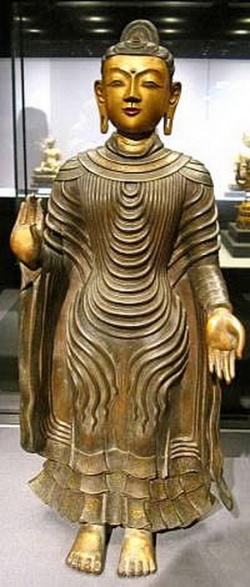Difference between revisions of "Manushibuddhas"
m (1 revision imported: VTao import from old cont) |
|
(No difference)
| |
Latest revision as of 18:03, 16 February 2015
Manushibuddhas- Human Buddhas with nirmana kaya, a body of transformation.
These Buddhas have lived among men.
Once a Manushi Buddha has performed his allotted task, he enters nirvana and is then beyond the power of men.
"A Buddha who has (temporarily) taken the shape of a man in order to live and work in the world," out of compassion for the suffering of living beings.
"There are seven:
Vipasyin,
Sikhi,
Vishvabhu,
Krakucchanda,
Kanakamuni,
Kasyapa,
Shakyamuni (Gautama).
The last four belong to our present Kalpa.
Known as "Terrestrial Buddhas", they are "Human Buddhas, Bodhisattvas, or incarnated Dhyan Chohans".
Each of Manushi-Buddha "has his particular divine prototype.
So, for instance, Amitâbha is the Dhyani-Buddha of Gautama Sakyamuni".
The Manushi Buddhas are related to the hierarchy known as Anupadaka:
The term Anupadaka, “parentless,” or without progenitors, is a mystical designation having several meanings in the philosophy.
By this name celestial beings, the Dhyan-Chohans or Dhyani-Buddhas, are generally meant.
But as these correspond mystically to the human Buddhas and Bodhisattwas, known as the “Mânushi (or human Buddhas” the latter are also designated “Anupadaka,” once that their whole personality is merged in their compound sixth and seventh principles—or Atma-Buddhi, and that they have become the “diamond-souled” (Vajra-sattvas),
Manushibuddha
